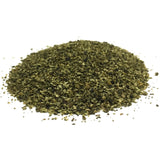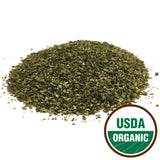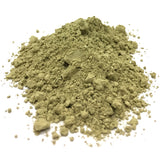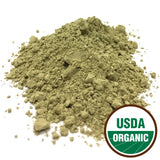Kelp contains the complete spectrum of minerals needed by man, as they are contained in the ocean itself. Aside from the fact that sea water as such is a veritable treasure trove of minerals, land minerals are constantly washing into the sea, enriching it still further. Most plants are tested for mineral content by burning the plant and analyzing the ash. Applying commercial fertilizer to the soil does not improve the situation, for this does not and cannot contain the trace minerals. What happens to the trace minerals that wash away with the farmlands? They wash into the ocean and are taken up into seaweeds. A marine algae with long hollow stalks and large gas-filled, floating bladders. Most fresh, usable kelp is washed ashore during heavy seas. These plentiful algae flourish throughout the oceans of the world and along the U.S sea coasts. The part used is the whole algae raw or dried, the latter being a better flavor. A very nutritious food, especially high in potassium, calcium, iodine & many trace minerals.
UPC: 084783010029.
Origin(s): Canada, France, United States.
Latin Name(s): Ascophyllum nodosum, Nereocustis luetkeana.
Also known as: Knotted Wrak, Egg Wrack.
Plant Part(s) Used: Seaweed.
Appearance: Green.
Aroma: Fish-like.
Taste: Fish-like.
GMO Status: Non-GMO.
Allergen: None.
Additives: Free of any additives or preservatives.
Applications / Preparations: Can be put into capsules, smoothies or infused as an herbal extract. For cosmetic use can be added in small amounts to cold-processed soaps for color & nourishing qualities.
Storage: Store in a sealed container in a cool, dry place.
Shelf Life: It is very difficult to pin down an exact expiration date for most single herbs as they do not really expire, they lose potency or strength over time but will still have value. Unlike synthetic material or drugs, herbs can contain many constituents that contribute to their medicinal effects. Even if when we know what the active constituents are, there are often many of them in a single herb, each with different rates of degradation. Some herbs lose their effect more easily. Other herbs that possess more stable compounds such as alkaloids or steroids will last much longer.
A huge part of the degradation rate of herbs depends also on the storage conditions of the herb, & even on the quality of the herb before storage – how it was grown, harvested, dried & processed. If the product is left in hot places or open to sunlight then it will degrade much quicker than if it was stored in cool, dry place & sealed tightly.
A good rule of thumb is that herbs should be stored no longer than 2-3 years but many herbs will have great strength much longer than that. To determine if a an herb is still good you can check the appearance & aroma. Herbs that are no longer acceptable will have lost much of its vibrant color & will instead appear dull & faded. The bigger key though is to smell the raw materials to see if the potent aroma is still present.
Warning: None known.








